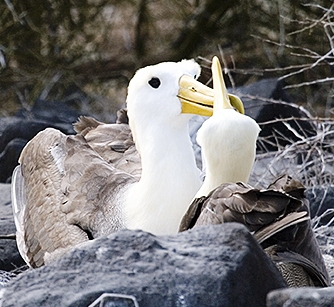At 2 a.m., the Polaris started her journey to the Espanola Island. The route brought us far out to the sea with heavy swells shaking the ship violently. It was hard to take a shower in the morning because you always needed to hold onto something. At 6:30 a.m., our expedition leader, Paula, issued the wake-up call through the ship-wide public announcement system. The day started for Gisela, Alexandra and Sophia with Dolphin stretching (also called Yoga) on the sky deck organized by the masseuse. Heiko recovered from sending an email via the onboard mail system to our server administrator. While otherwise not affected by seasickness, the two minutes looking at the monitor almost put him over the edge.
After breakfast, our black limousines (the black-colored zodiacs) shuttled us to the Southeastern island of Espanola.
Ride in the Morning
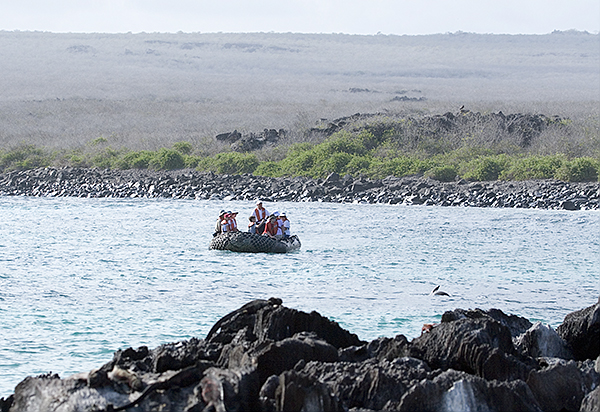
For the first time we set foot on unaltered Galapagos soil, ready for a two-mile hike through a region called Punta Suarez. Upon landing we had to pass by a female Sea Lion (Zalophus galapagensis) sleeping on the narrow trail. If this would have been a bull, it could have been dangerous because they defend their 10 to 15 wives vigorously. Erin hit the animal accidentally with her walking stick and was chased by her for a few yards--a scene which was captured by the videographer and made it into the voyage's chronicle. The small beach was occupied by a pack of Galapagos Sea Lions sunbathing and playing. They are quite vocal when playing (and smelly). The trail along the cliff was full of lava boulders. We saw many Marine Iguanas (Amblyrhynchus cristatus) and Espanola Lava Lizards (Microlophus delanonis) using the morning sun to increase their body temperature and to get ready for a swim and dive for food in the ocean. At night, the Marine Iguanas crowded together on top of each other to keep warm and fprevent their body temperature from drop.
Galapagos Sea Lions (Zalophus galapagensis)
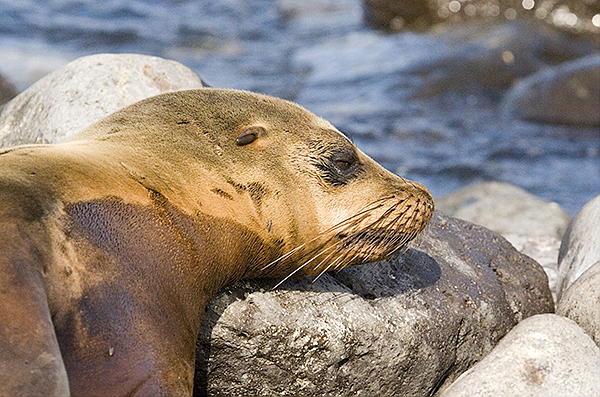
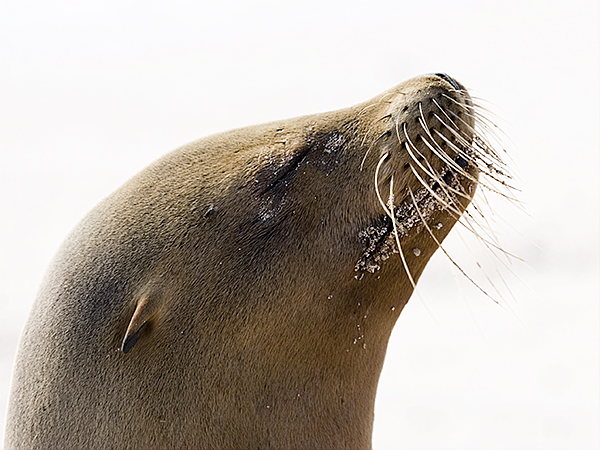
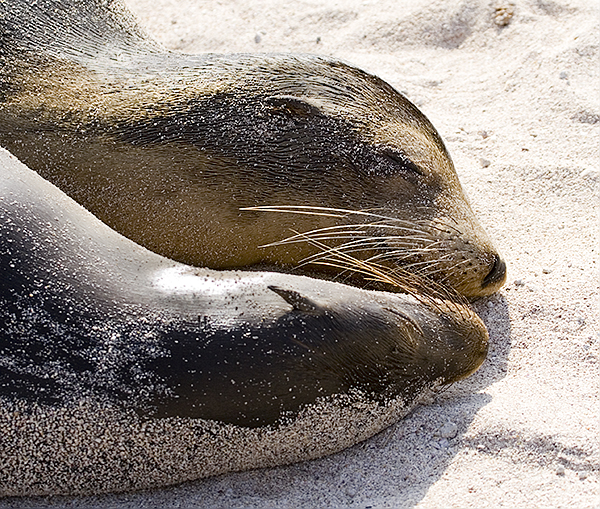
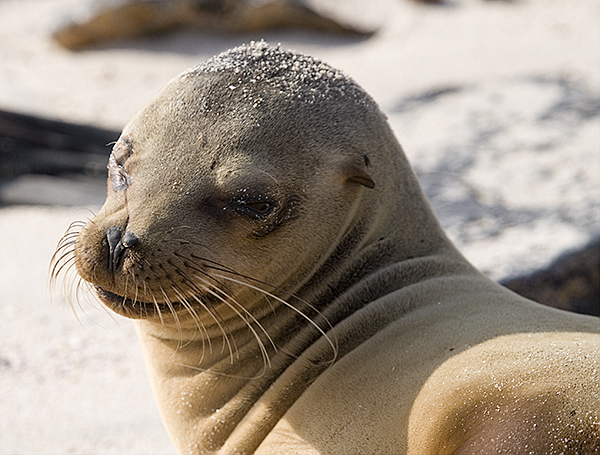
Marine Iguanas (Amblyrhynchus cristatus)
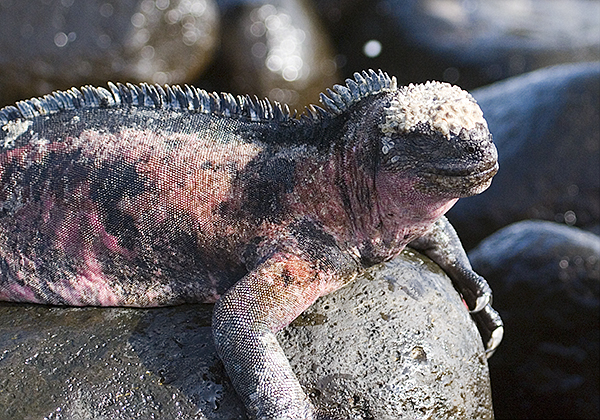
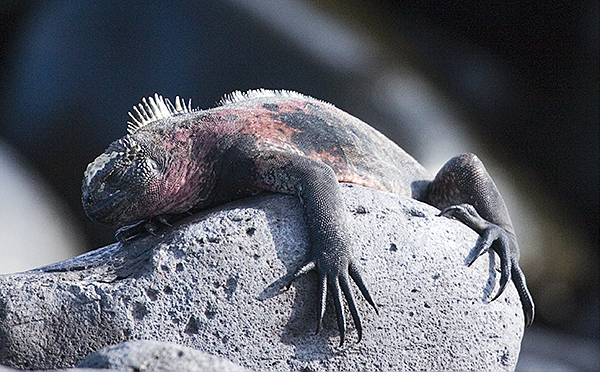
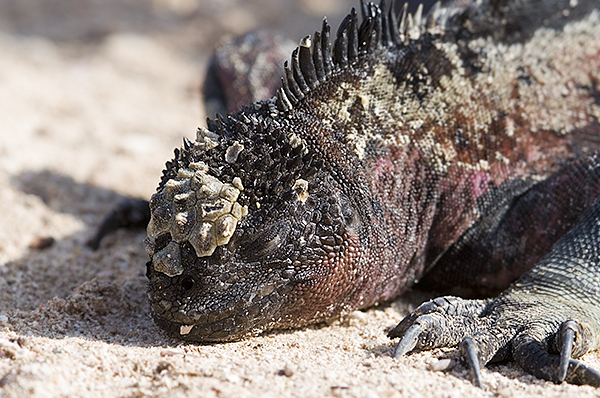
Zodiac Ride
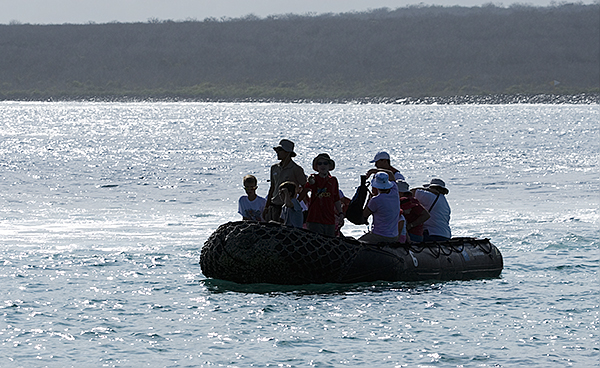
Punta Suarez
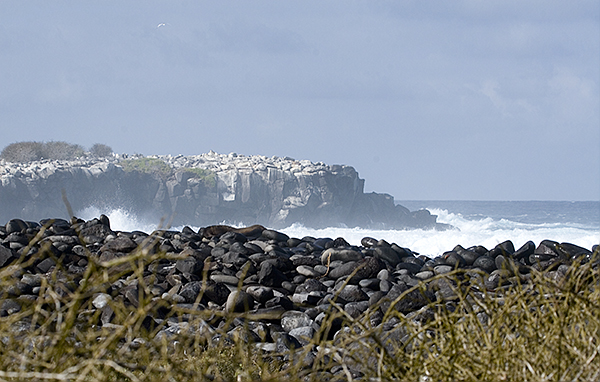
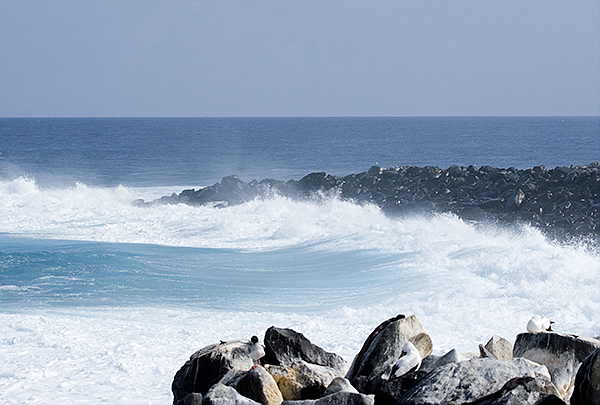
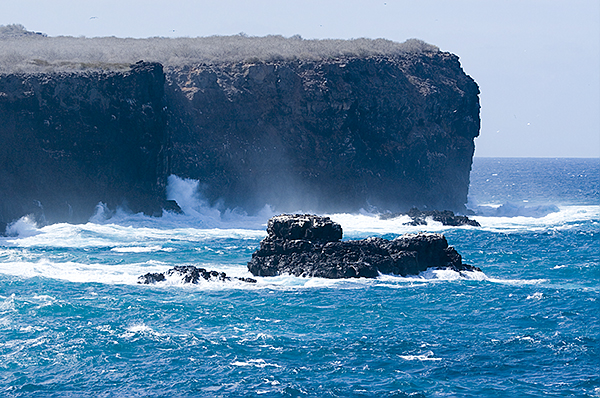
More Galapagos Sea Lions (Zalophus galapagensis)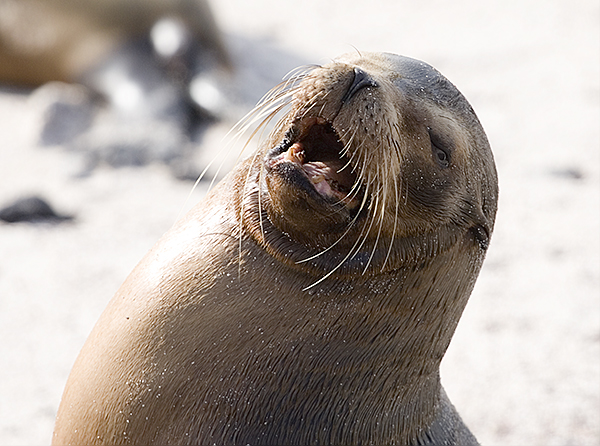
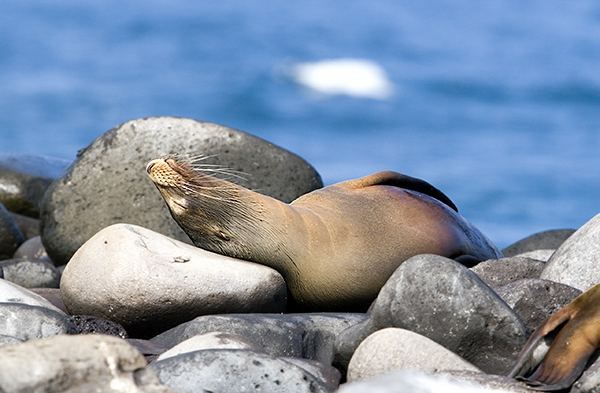
More Marine Iguanas (Amblyrhynchus cristatus)
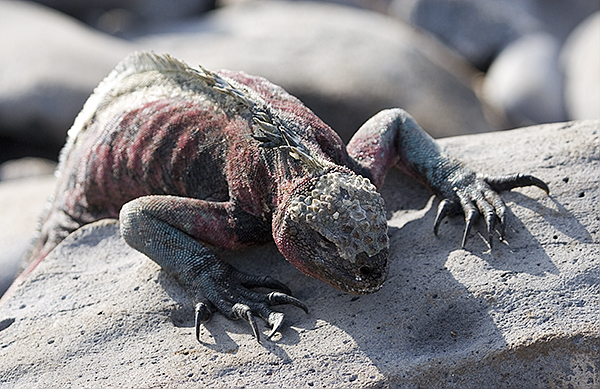
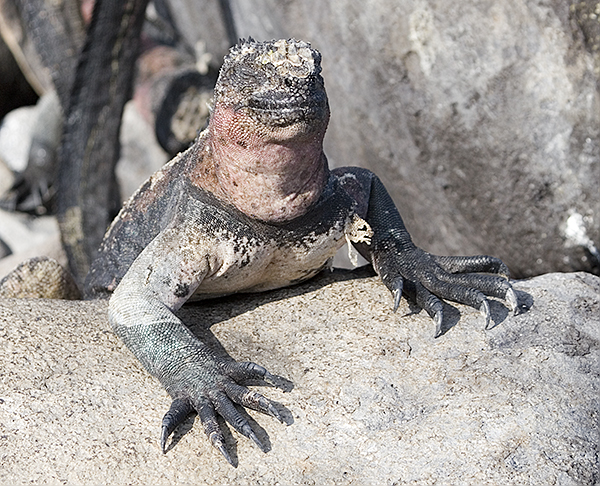
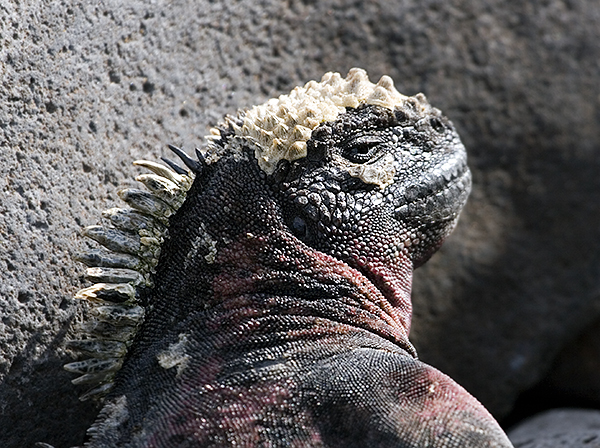
Espanola Lava Lizards (Microlophus delanonis) and Frigate Bird
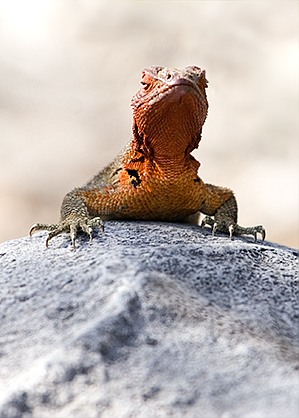
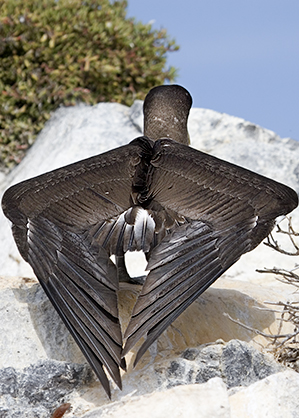
Swallow-tailed Gulls (Creagrus furcatus)
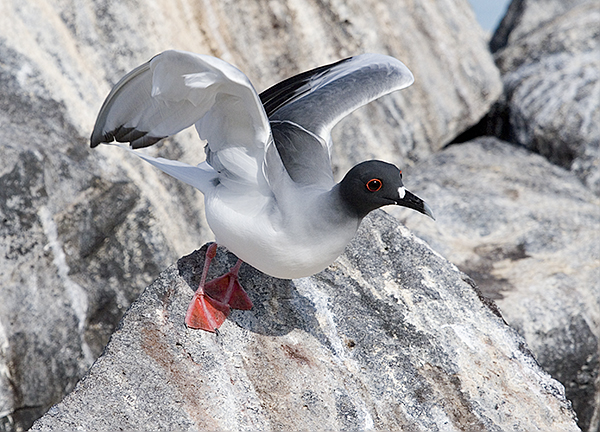
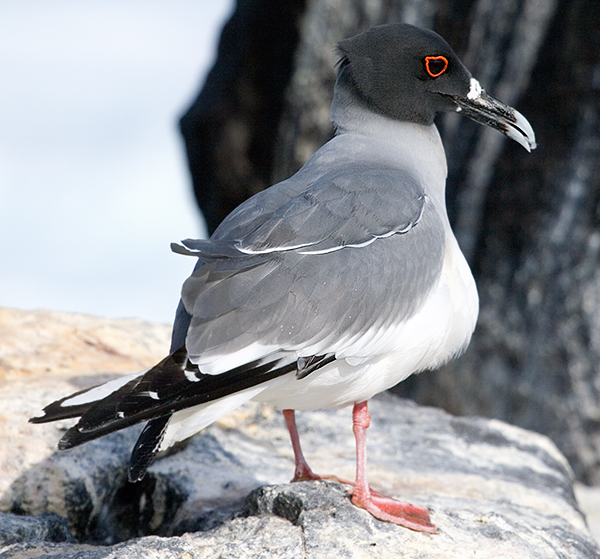
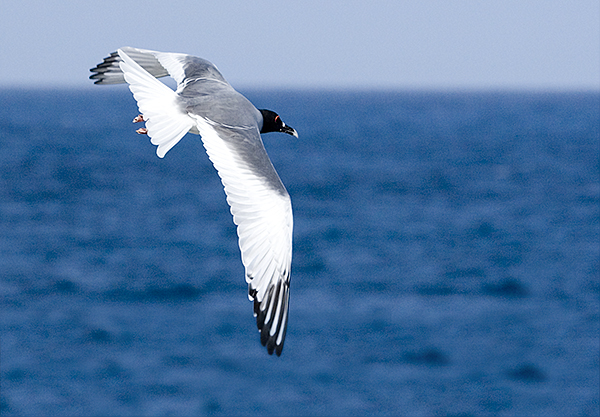
Frigatte Bird Eggs
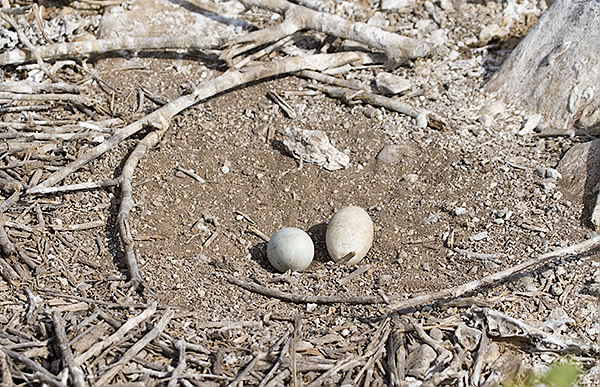
Nazca Boobies (Sula grantii)
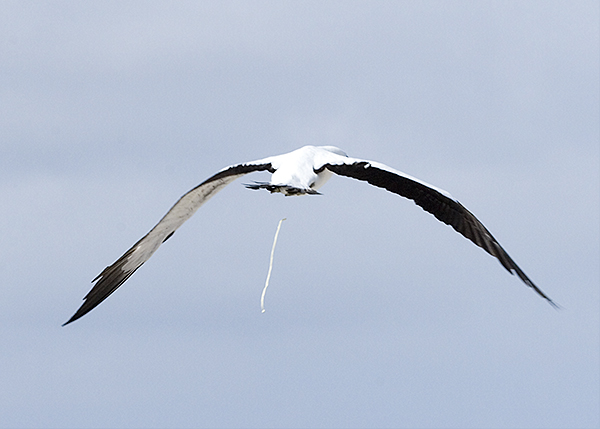
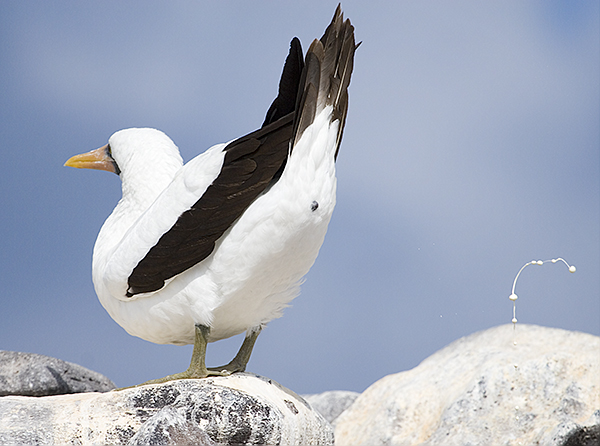
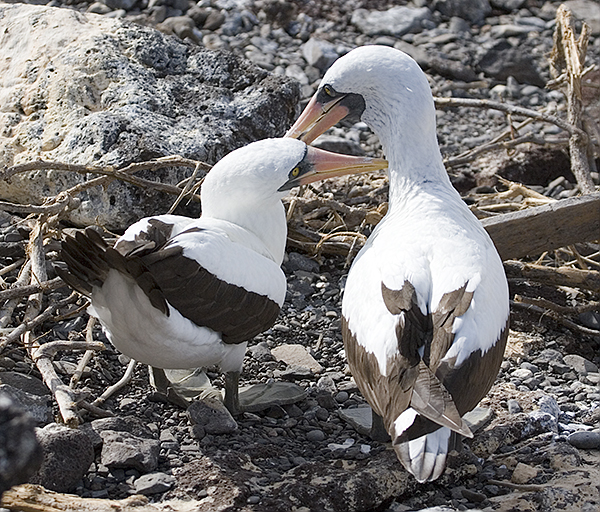
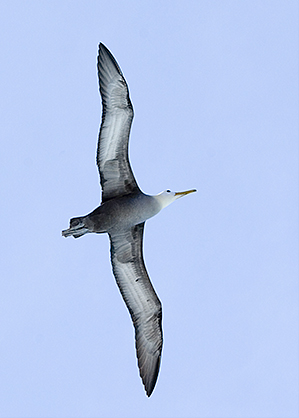
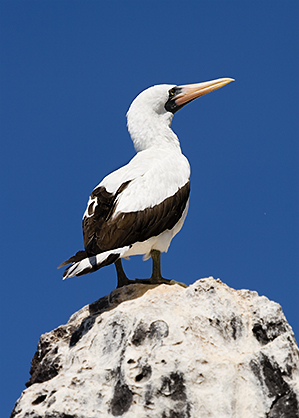
On the Trail
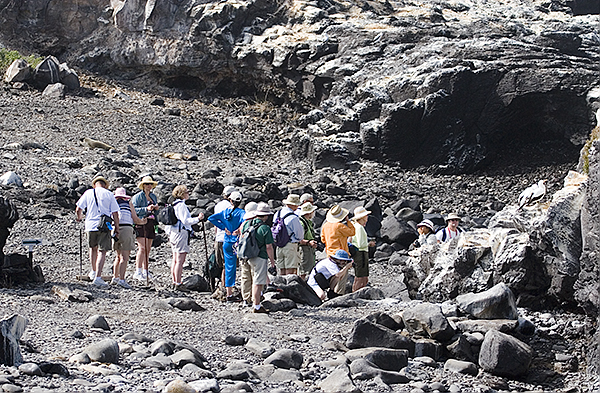
Sally Lightfoot Crabs
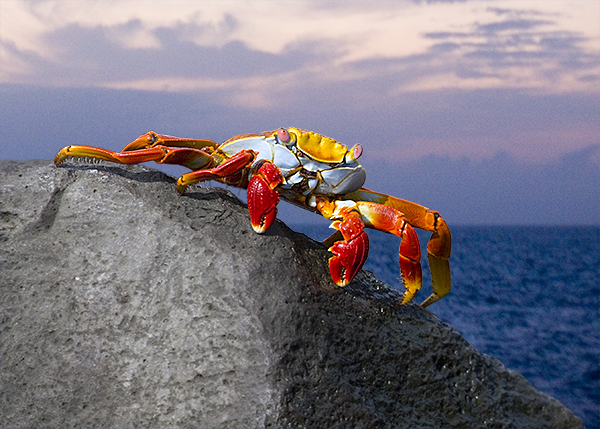
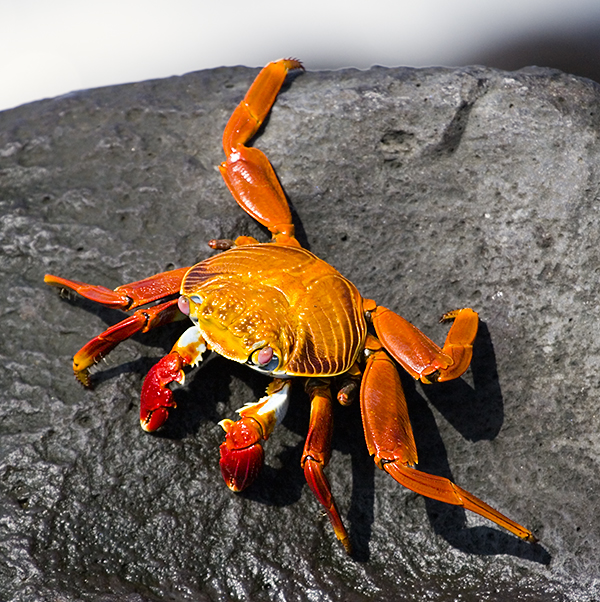
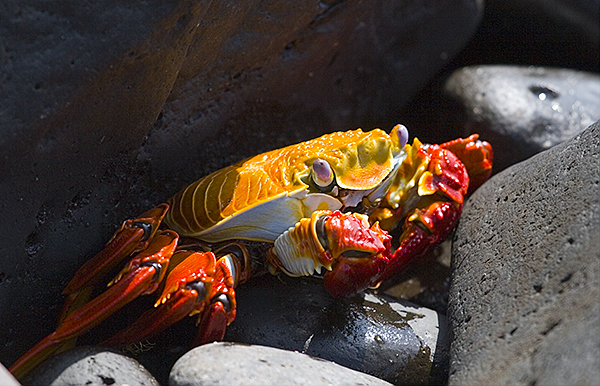
There was a rockery of Blue-footed (Sula nebouxii) and Nazca Boobies (Sula grantii) along the way. A Galapagos Hawk (Buteo galapagoensis) circled high above. Galapagos Mockingbirds (Nesomimus parvulus), another endemic species of the archipelago, tried to come so close to us that we had to pay attention not step onto them. Amazingly, all animals stayed where they were, always undisturbed by our passing by. The black Marine Iguanas are sometimes hard to make out on the black lava rocks so that we often almost stepped on them. We passed many Lava Lizards and saw a few species of Darwin 's finches. At the turning point, we saw swells thrusted out through a powerful blowhole creating misty fountains 60 feet into the air. Upon our return we were told to leave all shoes with Sea Lion droppings on them in the zodiacs, so the assigned staff member could clean them for us.
Blue-footed Boobies with Chick (Sula nebouxii)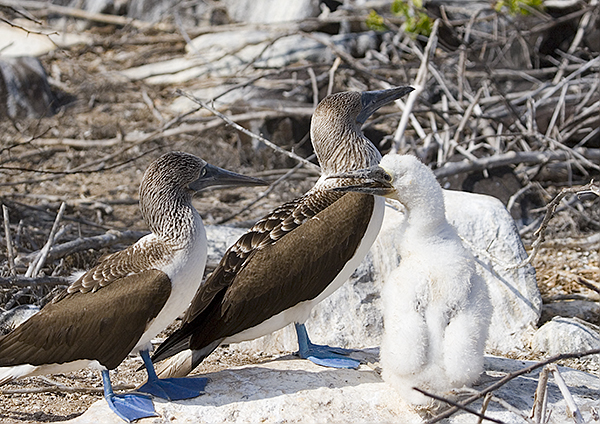
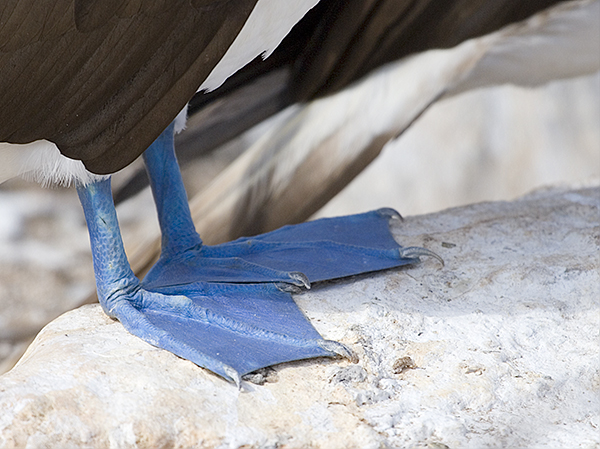
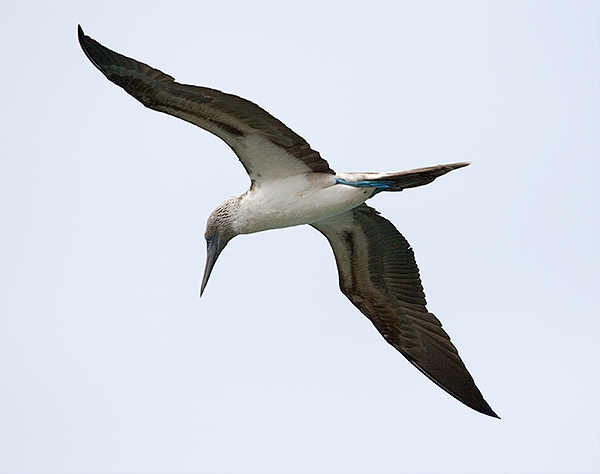
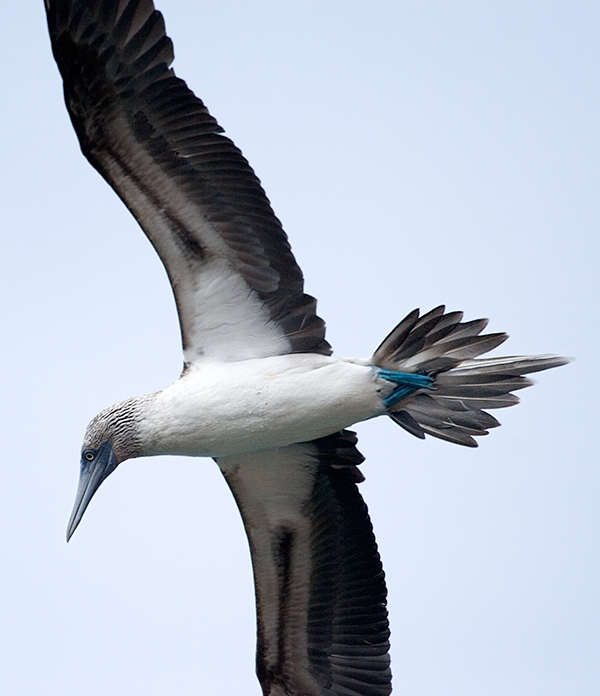
Waved Albatross (Diomedea irrorata)
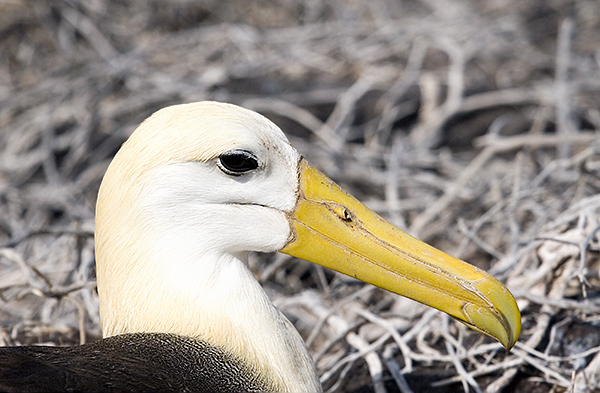
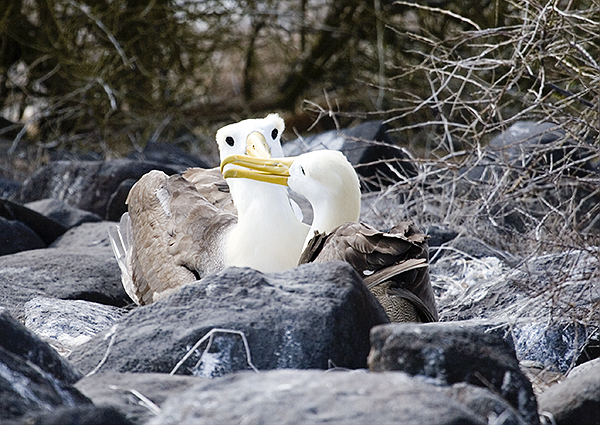
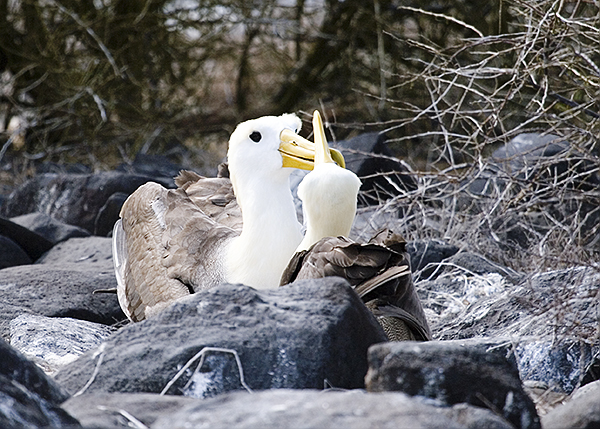
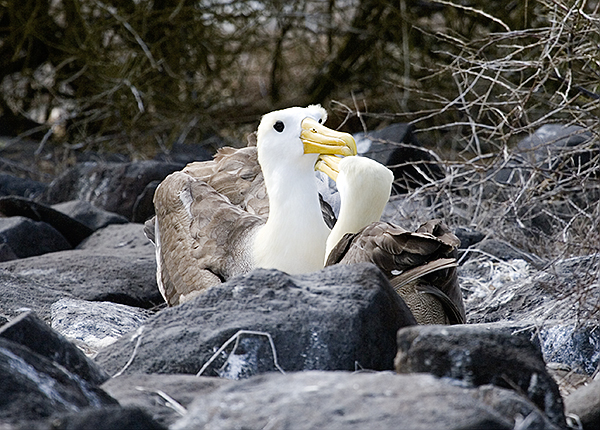
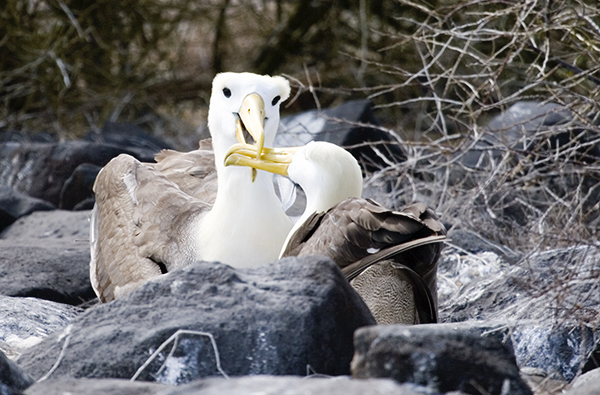
Galapagos Mockingbirds (Nesomimus parvulus)
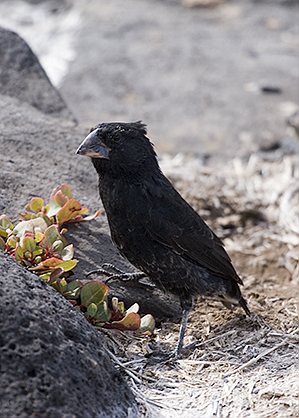
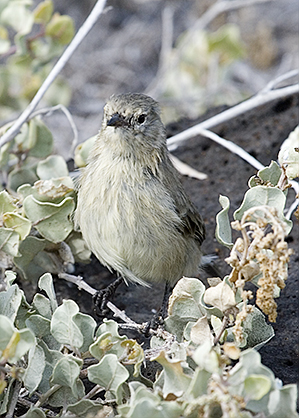
Punta Suarez Blowhole
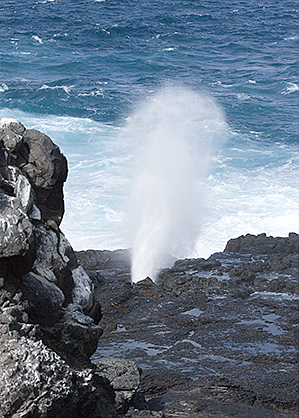
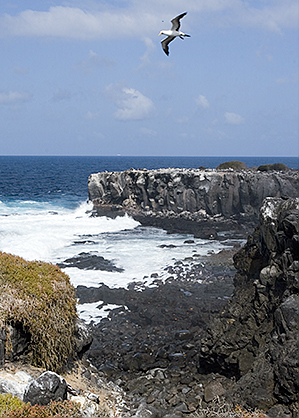
Rest
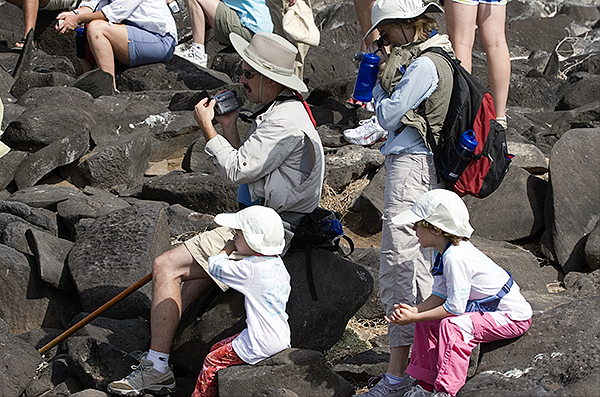
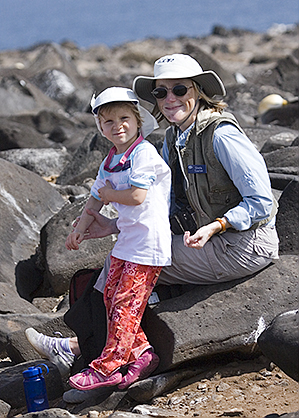
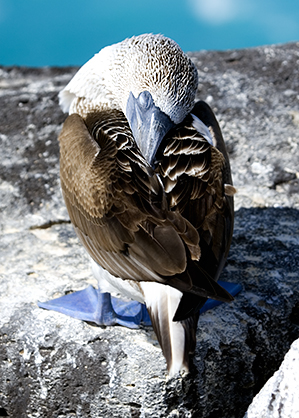
Marine Iguanas (Amblyrhynchus cristatus)
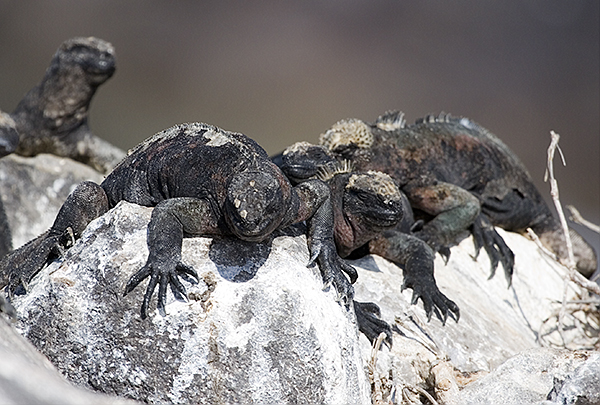
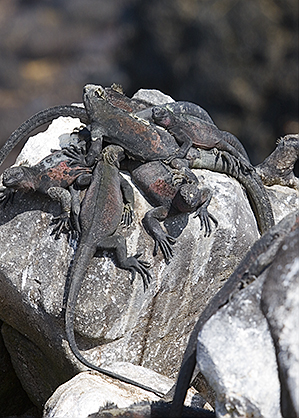
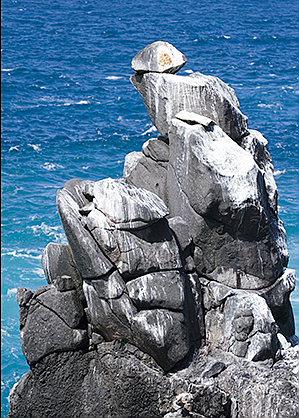
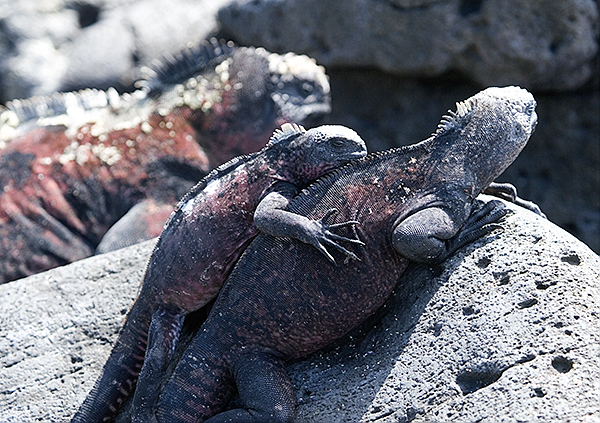
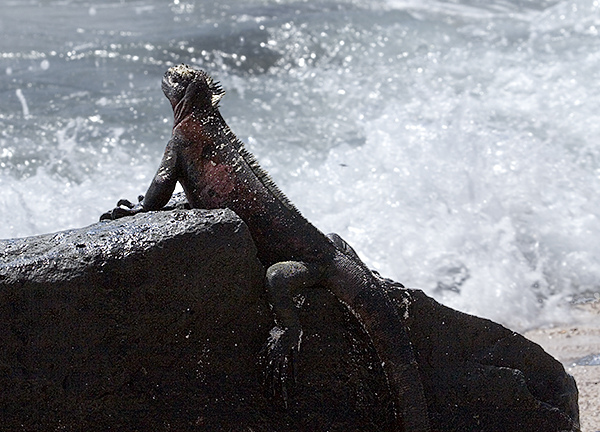
Galapagos Sea Lions (Zalophus galapagensis)
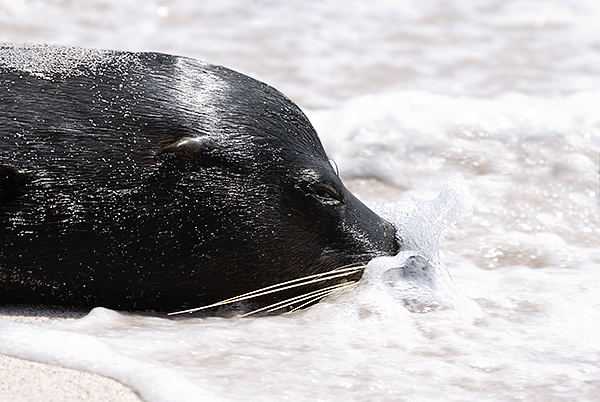
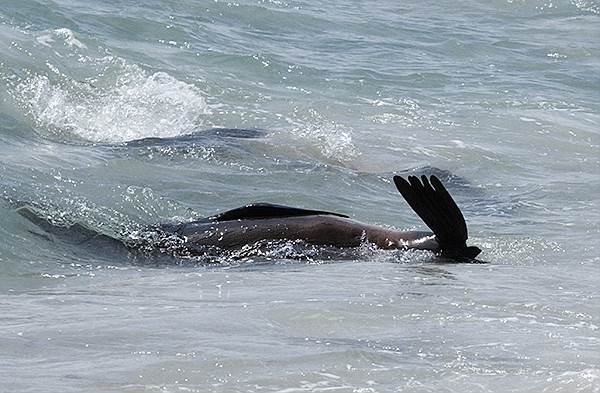
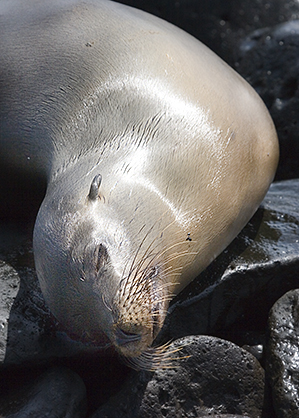
Back on board, we received snorkeling instructions for our afternoon snorkeling adventure near Gardner Bay. The Lindblad staff made sure everyone got a suitable option, good swimmers could go deep-water snorkeling, beginners could snorkel at the beach with instructions from a guide, or intermediate snorkelers could start at the beach and then go to an islet 500 yards off the beach. For non-snorkelers a glass-bottom boat was available. But if that was not enough, the staff offered various combinations of these options. We received our snorkeling gear assisted by staff making sure everything fit well. Bags marked with our cabin numbers would allow us through the week to store our gear in a central area preventing to bring the wet stuff into our cabins. Lindblad staff was even so thoughtful to provide a permanent marker at the disembarkation area to allow us to mark our underwater cameras which all look alike.
But, first there was lunch: A typical Ecuadorian lunch was presented by hotel manager Sofia. A Lechon Hornado (roasted pig or Spanferkel) sat across the dining room entrance, starting discussions among the American kids if the head was real or a plastic decoration. For starters, a salad of seafood marinated in lemon and tomato juice called Ceviche Mixto was served. There were more Equadorian specialties, such as steamed wahoo (a fish) in coconut sauce (Encocado de Pescado) or yellow rice prepared with achiote (Arroz Amarillo), potato patties with cheese and peanut butter sauce (Llapingachos), corn cooked in milk and eggs (Mote Pillo) or cassava chips (Chifles de Yuca).
With no time for a little nap, we left for our first snorkeling tour at 3 p.m. The white sandy beach were already very crowded when we arrived. There were approximately 200 Sea Lions which did not get up, or even looked up for the most part when we beached the zodiacs. We had to literally find our way between them to reach a dry spot on the sandy beach. However, when we left our belongings there during the snorkeling some of the more adventurous younger animals inspected our bags, sniffing and moving them around. Heiko was chased for a few meters by a bold female Sea Lion who was upset when he reclaimed his shoes.
First Snorkeling Trip
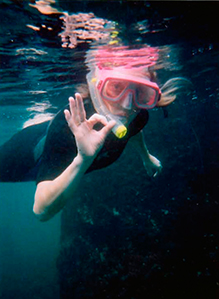

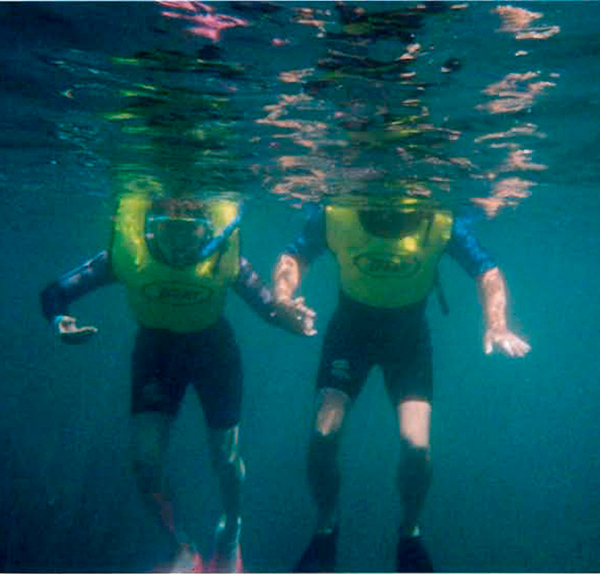
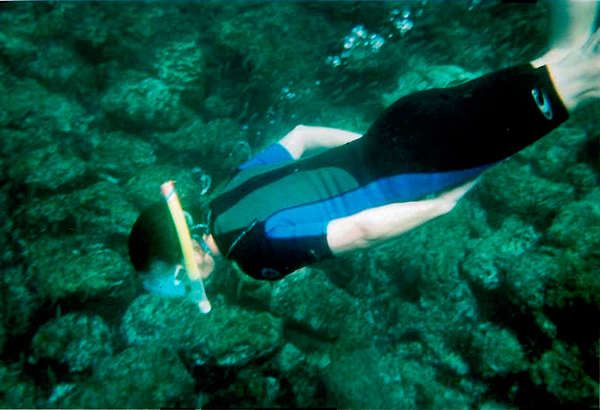
Snorkeling from the beach was more a test for the kids than an animal observation. However, during the second part, the Lindblad staff brought us to an islet or rock which lay a few hundred yards out in the ocean. Some of us saw a White-tipped Reef Shark (Triaenodon obesus) which was about seven feet long.
After our return, we showered and met in the big lounge for the “daily recap”, a Lindblad tradition. Before recap started, Paula, our expedition leader, who also happened to be the author of a children's book about Galapagos animals, read a few bedtime stories to the kids (“Galapagos Bedtime Stories").
At recap, a naturalist explained the formation of beach sand out of coral and the videographer showed underwater footage on the large plasma screen which he had shot in the afternoon while we were snorkeling. He explained all the fish species and their behavior. Paula explained the options and the schedule for the following day. While we listened to the presentations, Lindblad staff served drinks and hors d'oeuvres.
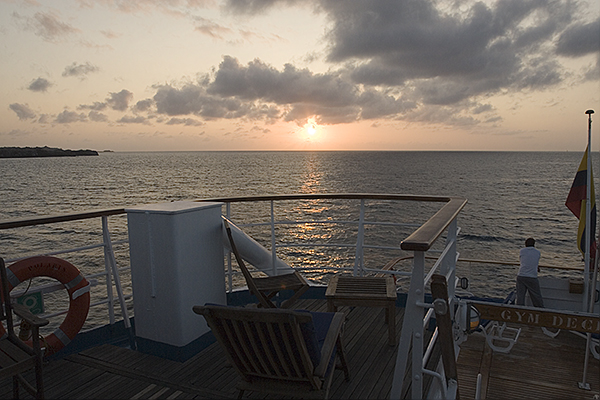
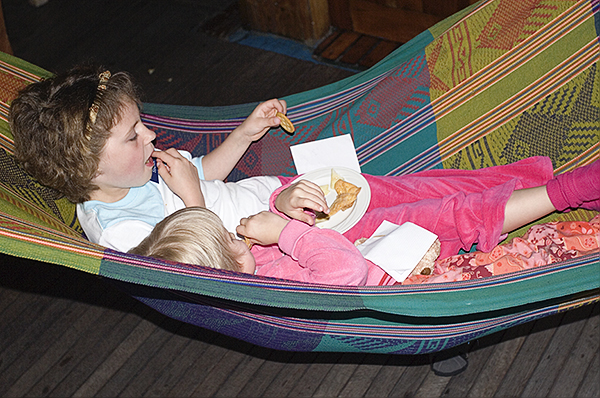
A three-course dinner completed the day. Alexandra begged after the main course if she could go to bed because she was so tired.

